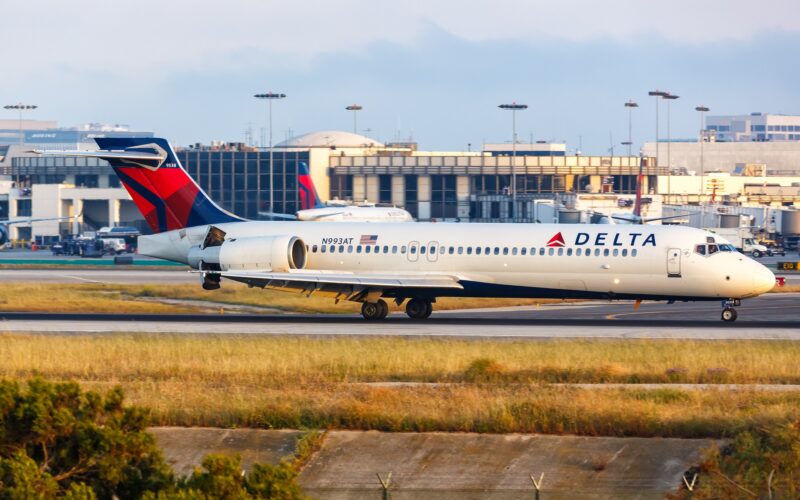The United States (US) National Transportation Safety Board (NTSB) released a preliminary report into an incident where a Delta Air Lines Boeing 717 was forced to land without its front landing gear.
In the report the NTSB highlighted that upon landing the Delta Air Lines Boeing 717, registered as N955AT, “sustained substantial damage when the nose landing gear did not extend before landing at Charlotte Douglass International Airport (CLT), Charlotte, North Carolina”. Fortunately, all 104 occupants, including five crew members and 99 passengers, evacuated without any injuries.
The Boeing 717 was operating flight DL1092 from Atlanta Hartsfield-Jackson International Airport (ATL) on June 28, 2023, when the incident occurred.
Per the report, the pilots said that when the aircraft was about 2,000 feet (609.6 meters) above ground level (AGL), the first officer (FO) attempted to lower the landing gear. However, they observed the “nose wheel unsafe condition light illuminate”. After the pilots confirmed the unsafe condition in the electronic instrument system or EIS, they initiated a go-around to address the issue and go through the applicable checklists.
After an attempt to manually lower the landing gear, the pilots contacted the Delta Air Lines flight control in Atlanta, Georgia, via Aircraft Communication Addressing and Reporting System or ACARS and declared an emergency. “As the airplane approached 300 ft AGL, ATC notified the flight crew that the nose wheel was not visible, and a second go-around was initiated,” the NTSB noted in the report.
When subsequent attempts to lower the landing gear failed, the pilots made the decision to land at CLT.
“The airplane touched down about 1,400 ft from the runway’s threshold and the nose was lowered onto the runway at about 80 knots,” the report continued, adding that fire crews sprayed the nose wheel area with water, while the crew was conducting shutdown and evacuation checklists. After approval from the fire chief, who verified the area’s safety, passengers evacuated from the Boeing 717 using the emergency slides.
After investigating the landing gear, the NTSB found a “fractured upper lock link”. Because of the fracture, the link “was free to swing down to a vertical position and made contact with the nose landing gear assembly and thereby restricted its movement”.
“The fractured lock link was sent to the NTSB materials laboratory for examination and the cockpit voice recorder (CVR), and the flight data recorder (FDR) were sent to the NTSB recorders laboratory for download,” the NTSB report stated, adding that the investigators also quarantined the 717’s maintenance records that will proceed to review.

